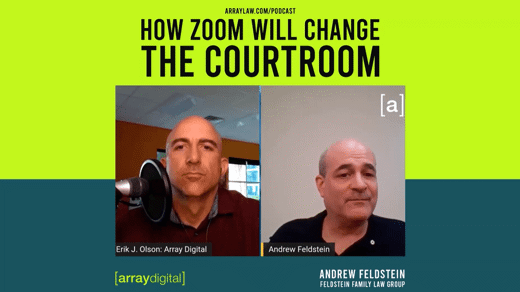Hello, I am Nick Slinko with the Feldstein Family Law Group.
In my previous video, I provided an explanation of Case Conferences. Today, I would like to continue where I left off, which was on the subject of bringing or responding to Motions for interim relief.
Motions
What is a Motion?
Well, it is kind of like a Trial, however, all of the evidence is usually provided to the Court in a written format, as opposed to being given orally.
A Motion can be the first court date the parties attend, but that is usually in cases involving some urgency, which need an immediate decision. It is only in urgent cases that a Motion will be heard by the Court prior to holding a Case Conference. After a Case Conference has been held, a Motion can be brought at almost any time, whether there is urgency or not.
Why do parties bring Motions?
Well, usually a Motion is brought when a party wants a decision on something and cannot or should not have to wait for a Trial.
What kind of Orders can be made at a Motion? Normally, only interim or temporary Orders can be made at Motions, which means even if you win your Motion, it is only a temporary victory and you could still have a Trial judge reverse whatever was granted at your Motion.
In order to get your evidence before the Court for a Motion, you will need to prepare, serve and file a Notice of Motion. This sets out the Orders you want the judge to make at the Motion. You will also need to prepare, serve and file an Affidavit, which is a sworn statement of all the evidence you will rely upon for the judge to make the Orders you have requested.
You can also attach Exhibits to your Affidavit of any further evidence that you want the Court to consider in support of your Affidavit. These materials usually need to be served on the other party at least four days before the day of the Motion. Sometimes you will be required to prepare, serve and file a Factum, which provides the Court with a breakdown of the relevant law on the subject of your Motion and how the law applies to the facts of your matter. To respond to a Motion, you can prepare, serve and file an Affidavit, and a Notice of Motion, if you plan to bring a cross-motion.
It is important to consider what you put in your materials, as the judge will make his or her Orders based solely on what you have served and filed, in support of or in response to a Motion. You will be permitted to make some oral submissions in support of your written materials; however you will not be permitted to give any evidence during your submissions, only argument.
As all of the documents listed above are crucial to moving your Court Application to a resolution, and a judge will read every Court document, you should consider having a lawyer assist with drafting your Court documents. Alternatively, a lawyer can be retained to provide you with some advice on what would be best to put in your materials. You should decide what works best for you.
I’m Nick Slinko. Thank you for watching today. If you need more information and wish to schedule a consultation, please visit our website or contact our office at 905-581-7222.



